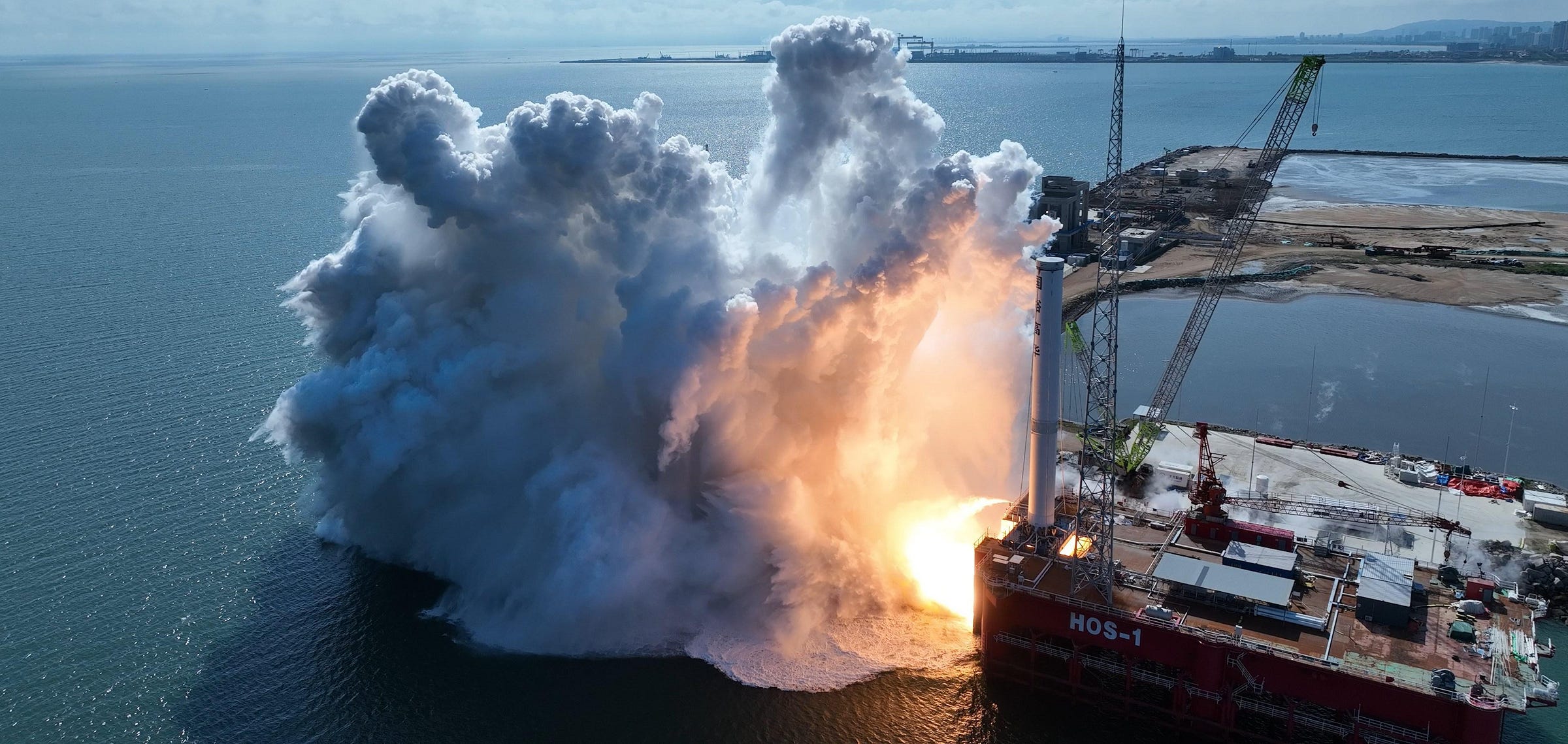Tianlong-3 Successfully Performs Static Fire
Space Pioneer's reusable rocket is back on the road to launch.
Earlier today, September 15th, Space Pioneer successfully performed a static fire of Tianlong-3’s first-stage booster on a floating platform near Haiyang (海阳市), in Shandong (山东) province.
Specific details on the booster’s performance were not shared by Space Pioneer, with footage showing it firing for about thirty seconds, generating up to 840 tons of thrust. The company did note that the static fire verified coordination across the nine rocket-grade kerosene and liquid oxygen burning TH-12 engines, for start-up, shutdown, throttling, and gimbaling, alongside generally verifying the first-stage’s design through loading propellants and liquid nitrogen to pressurize the tanks.
Having conducted this test with Tianlong-3 remaining in place, Space Pioneer celebrated by sharing the following in its post-firing blog post:
“The [static fire] represents the most extensive, complex, and challenging ground test in the development process, serving as the most critical preparatory test before the rocket's maiden flight. Passing this [static fire] signifies that the Tianlong-3, China's largest privately-owned liquid rocket, has passed the ‘big test’ and is now entering the final sprint for its maiden flight.”
If there are any problems with this translation please reach out and correct me.
Before this static fire, Tianlong-3 had 127 improvements and fixes implemented for structural strength, control systems, pressurization methods, and transportation methodology following June 2024’s not-very-static static fire.
Today’s static fire was also the first time a liquid propellant rocket was fuelled and fired on a floating platform in China, demonstrating the necessary measures to do so, including the mobile fueling systems, a partially submerged flame diverter, as well as hardware to keep the booster stable and safe.
With the first-stage now having been fired up, Space Pioneer may resume efforts to test fire Tianlong-3’s second-stage on the same floating platform. Previous plans to do so were halted in June.
After both stages have been sufficiently tested according to Space Pioneer’s criteria, the full 72-meter-tall two-stage partially reusable Tianlong-31 will head to its dedicated launch pad at the Jiuquan Satellite Launch Center, completed in July, for its debut flight before the end of the year.
Following Tianlong-3’s debut flight, Space Pioneer aims to support the deployment of several Chinese constellations, having recently been awarded a contract for the Qianfan (千帆) internet mega-constellation. In the coming years, the company is hoping to launch Tianlong-3 thirty times per year (through two Jiuquan launch pads), and now being treated as just another launch company again.
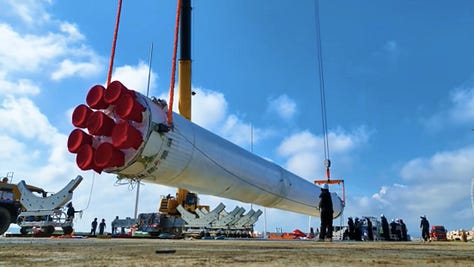

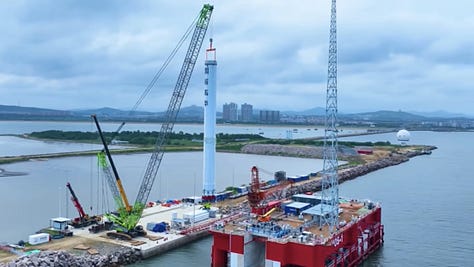
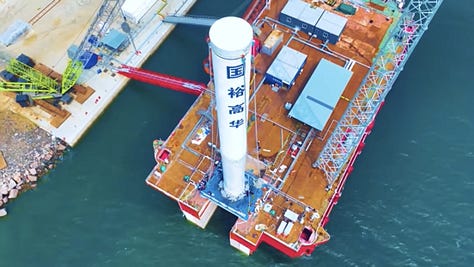
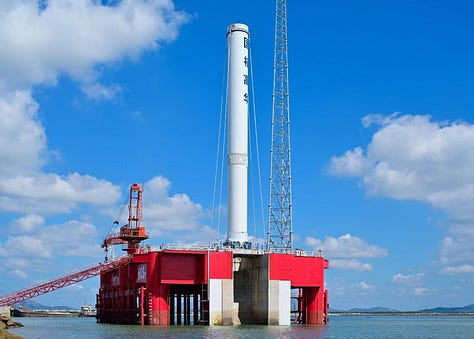
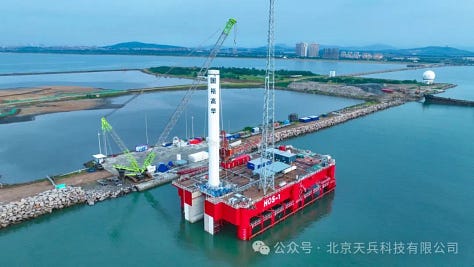



Also weighing about 600,000 kilograms fully fuelled. The rocket can deliver 22,000 kilograms to low Earth orbit of 17,000 kilograms to sun-synchronus orbit when expended. With first-stage reuse, Tianlong-3 can carry 17,000 kilograms to low Earth orbit or 10,000 kilograms to sun-synchronous orbit.



